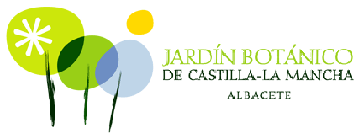Resumen
Ethnopharmacological relevance
Determining traditional remedies for human pathologies is relevant, when compared with the standard materia medica of the pharmacopoeias and dietary supplement databases, because we can assess the species and uses that have been previously studied and target understudied species for further pharmacological investigation.
Background
The aim of this study was to systematically record and analyze medicinal uses of natural resources (Plantae, Animalia, Fungi and minerals), mostly local, in the territories adjoining the upper Guadiana River and its tributaries.
We were particularly interested in recording resources and pathologies linked to wetland areas, especially in the National Parks Las Tablas de Daimiel and Cabañeros. Wetlands are interesting because they present a double face in relation with human health: Wetlands furnish hydration, safe water, nutrition, and medicinal resources; are places from which people derive their livelihood. However wetlands are also sites of exposure to pollution or toxicants, and infectious diseases; and sites of physical hazards.
We wanted to identify procedures for preparation of medicinal formulae and routes of administration. We also intended to detect whether a geographical pattern exists or not in our records in relation to the use of local resources.
Methods
We used semi-structured interviews with one-to-one informants or groups, from 1998 to 2018. Raw data were introduced in a Firebird database and analyzed. To identify ingredients and pathologies we consulted local floras and epidemiological literature. Finally, we compared documented pathologies, remedies and ingredients in the historical context of medicinal uses of natural resources in Castile-La Mancha and especially in Ciudad Real.
Results
126 pathologies and 220 species furnishing ingredients have been recorded from the interviews. In total, 188 are plants and 20 animals. The most commonly used species include Malva sylvestris, Phlomis lychnitis, Genista tridentata and Thymus mastichina. Most records refer to flowers, or fruits, of locally available plant species, classified as Mediterranean, European or widespread that belong to the Lamiaceae, Compositae or Leguminosae. Ingredients which are collected in open shrublands, known as “garrigue”, and dry grasslands furnish a relevant proportion of records while the imported ingredients remain marginal. The contribution of wetlands, riverine habitats and irrigated fields and gardens as a source of medicinal resources is 36% of the records. It is relatively high considering its limited presence in terms of total extension within the study area. The most frequently reported diseases are respiratory, gastrointestinal, dermatological and infectious or parasitic.
Conclusions
Along the Guadiana River in the Ciudad Real province exists a wide and deep knowledge of traditional remedies for the treatment of common pathologies, based fundamentally on the use of local flora, fauna and mineral resources. The uses and ingredients documented are useful for further pharmacological investigation to improve health care for a wide range of pathologies.


Leave a Reply